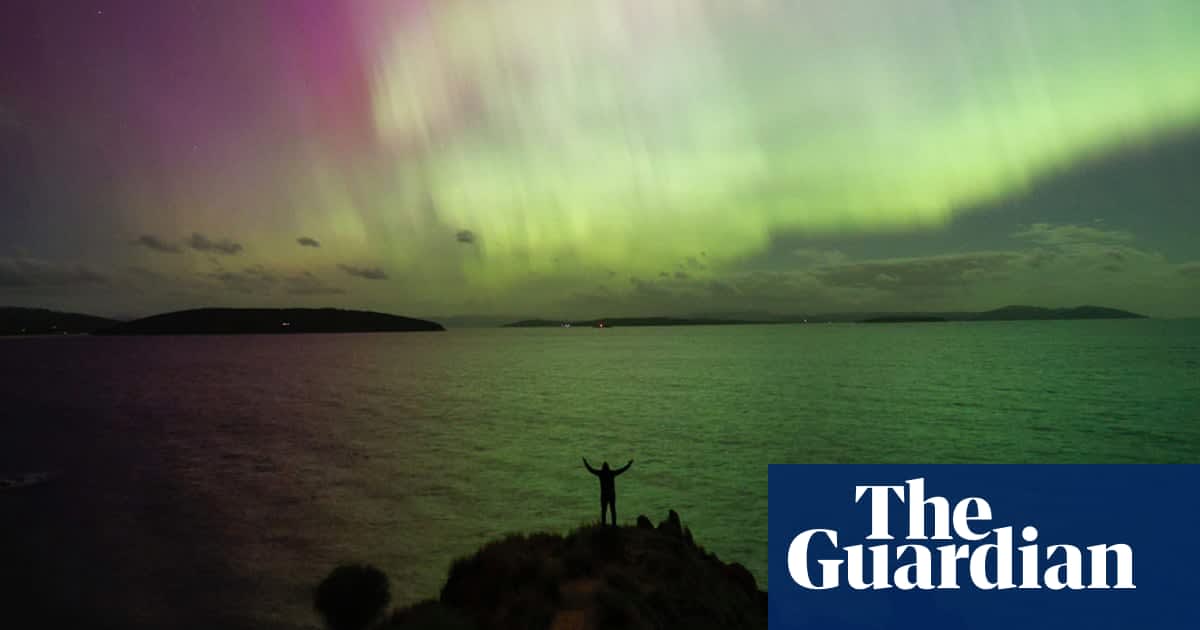The green and purple southern lights show was so strong it appeared over Tasmania, Victoria, South Australia, Western Australia and NSW
South-eastern Australia was treated to a dazzling natural light show to begin 2025.
A vibrant aurora australis was visible to the naked eye on New Year’s Day in Tasmania and parts of Victoria, South Australia, Western Australia and New South Wales.
Here Is The View Of The Aurora Over In Launceston And Devonport Tasmania, Mildura Victoria And Camden New South Wales 🌌 #AuroraAustralis #MooningCrew #SolarStorm pic.twitter.com/9wPOxfvk4q
Streaks of green and purple southern lights were visible from 11.30pm on Wednesday through to early Thursday morning.
The clear weather, along with a severe geomagnetic storm, produced the spectacular light show, with users sharing photos of the experience on social media.
Aurora now
Look south
Huge naked eye beams #Tasmania #auroraaustralis pic.twitter.com/VSimlJqQ4R
The aurora was so strong it appeared over Hobart, despite the city lights that usually prevent such phenomena from being seen.
Prof Michael Brown from Monash University’s school of physics and astronomy said the aurora came at the peak of a 12-year cycle.
“It’s not that common an occurrence, but it’s been happening a lot over the past year,” he said.
“The sun has a natural cycle of 11 years, roughly, and we’re at the peak of that cycle right now, the solar maximum. And this means a lot of solar storms, a lot of solar flares, and these produce more aurora than normal.”
Took the Canon EOS 1200D out to Queenstown Airport Tasmania and got these
Aurora Australis 01 01 2025 (@BrownSquirrel) pic.twitter.com/DROqE7PuWU
He said the past 12 months had produced “some of the best displays of aurora … visible from Australia in living memory”.
“Last night’s display was probably one of the top five from the past year.”
Aurora Australis right now. Tasmania. pic.twitter.com/Ow30l4n87K
The displays are produced by a geomagnetic storm, and a product of the sun launching a series of charged particles towards Earth.
When those charged particles interact with Earth’s magnetic field they produce the bright colours that were visible across southern Australia overnight.
But such displays are hard to predict. Brown said there could be more in the future but it would be difficult to know exactly when. It is possible they will return in four weeks, once the sun has spun around so that the storm again faces the Earth.
I’m up late but wow the Aurora from my window has made it worth it!#tasmania #auroraaustralis pic.twitter.com/voQQjAZHl1
“There’s a possibility of another such display soon,” he said. “These storms on the surface of the sun come from particular regions, and the region that produced the current burst of activity may still be active in four weeks, which means it could produce aurora in four weeks.
“But it’s also possible that in four weeks this region will will have fizzled out.
“There’s definitely going to be more opportunities [to see the aurora], whether it’s exactly in four weeks or not, I can’t really say.”
Source: www.theguardian.com
